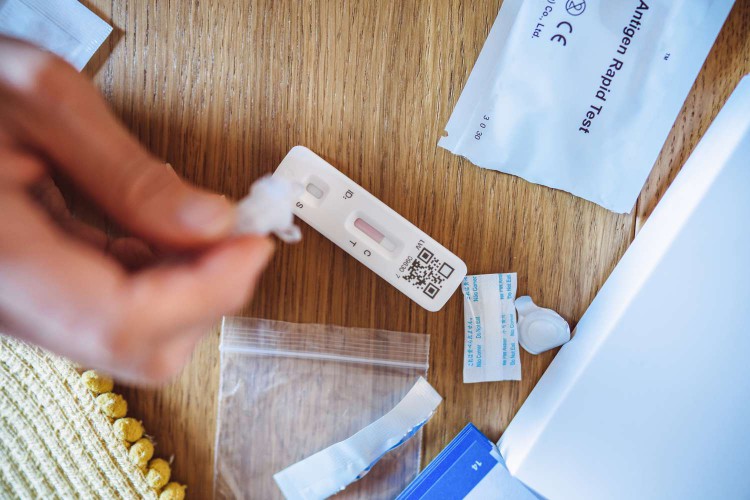
Parkinson’s disease is a neurodegenerative disorder that affects more than 10 million people worldwide.
Symptoms, which include tremors, muscle stiffness, and impaired mobility, are believed to be caused by build up of alpha-synuclein fibrils that impair the function of nerve cells.
There are currently no diagnostic tests for Parkinson’s disease, meaning that doctors usually diagnose the disorder by taking a person’s medical history and carrying out a neurological examination once symptoms are advanced.
Now, researchers have developed a technique to detect and quantify alpha-synuclein fibrils, which may lead to early tests to diagnose Parkinson’s.
It is most common in people over the age of 60 years, although early-onset Parkinson’s, which often has a genetic component, can affect people under 50 years old.
Symptoms occur when nerve cells in the part of the brain that controls movement are damaged or die, and stop producing the neurotransmitter dopamine, leading to problems with movement.
The damage is caused when a protein,, found predominantly at synapses — the junctions between nerve cells — clumps together to form fibrils. These fibrils, in turn, disrupt mechanical cell function or are toxic to the cells.
Typically, physicians diagnose Parkinson’s by taking a person’s medical history, assessing their symptoms, and carrying out a neurological examination. However, a firm diagnosis usually depends on the patient’s response to medication for Parkinson’s disease.
Now, a research team from Brigham and Women’s Hospital and the Wyss Institute for Biologically Inspired Engineering at Harvard has developed a molecular assay test that detects alpha-synuclein fibrils in samples of brain tissue and cerebrospinal fluid from people with Parkinson’s disease.
The researchers hope this technique may lead to clinical tests that can diagnose Parkinson’s disease in its very early stages, and might even lead to more effective treatments.
Their findings are published in PNAS.
Dr. Michael S. Okun, executive director at the Norman Fixel Institute for Neurological Diseases, University of Florida Health, and medical advisor for Parkinson’s Foundation, who was not involved in the study, told Medical News Today:
“These authors presented a novel approach for the development of what is called a digital seed amplification assay. The advantage of this approach is measuring neurodegenerative seeding at miniscule levels. Importantly, the authors used brain tissue and spinal fluid from folks with Parkinson’s disease and multiple system atrophy and they were able to detect and separate these aggregates.”
A new molecular test for Parkinson’s?
The researchers used a digital alpha-synuclein(SAA) — a technique that multiplies the number of alpha-synuclein molecules so they can be detected — with samples taken from brain tissue and cerebrospinal fluid (CSF).have used similar techniques, but this study takes the method further.
By compartimentalizing the reaction into microwells, droplets, or, the researchers were able to extend the technique to quantify even minute amounts of alpha-synuclein.
In a press release, corresponding author Dr. David Walt, of the Department of Pathology at the Brigham and Women’s Hospital and a core faculty member at the Wyss Institute, stated that “[t]his work is an important step toward our goal to develop a method to detect and quantify a key marker of Parkinson’s disease to help clinicians identify patients much earlier.”
Early diagnosis potential
“Having a biomarker that we can quantify could help us identify new drug candidates, and test their effects in more targeted patient cohorts at early stages of the diseases,” Dr. Walt added in the press release.
By the time clinical symptoms appear, Parkinson’s disease has caused significant, irreversible damage in the brain. The symptoms are also often identical to those of other neurological disorders, so a test that can differentiate the disorders early would be a huge step forward.
The researchers suggest that their technique could turn the disease-causing alpha-synuclein into an early biomarker for detecting not only Parkinson’s disease but also multiple system atrophy and dementia with Lewy bodies.
While their technique worked well on brain and CSF samples, for clinical diagnosis blood and other bodily fluids are much easier to sample. The researchers aim to improve the sensitivity of the technique to enable it to detect alpha-synuclein in these fluids.
Dr. Okun was encouraged by their findings, telling MNT that, “[i]f this technique can be refined to reliably diagnose and separate Parkinson’s and multiple system atrophy early in the disease process, and do it with a simple blood test, it could have a big impact.”
Earlier, more effective treatments for Parkinson’s?
The team also looked at whether their technique might be useful for screening potential treatments for these disorders, and used to distinguish between the different alpha-synuclein fibril structures found in Parkinson’s disease, multiple system atrophy, and dementia with Lewy bodies.
Although in the early days, these findings mark a step forward in the search for effective diagnostics and treatments for Parkinson’s disease, which affects some 10 million people worldwide. It may also have potential for drug screening for this and related conditions, such as multiple system atrophy and dementia with Lewy bodies.
“The hope is that they [the researchers] will be able to develop and to refine early molecular diagnostics that one day may improve clinical trials and facilitate drug screening for neurotherapeutics. It is too early to know if this approach will have impact.”
– Dr. Michael S. Okun
Related pages
2023 in review: Sweeteners, colon cancer, and male birth control
2023 has witnessed no shortage of medical firsts and breakthroughs but has also seen many alarming h

What Is Rocky Mountain Spotted Fever? CDC Issues Health Alert
The CDC issued a health alert for Rocky Mountain spotted fever (RMSF), a tickborne illness, after fi

When to Test for COVID After Symptoms Appear
New research found that a person’s viral load is highest four to five days after COVID-19 symptoms b

Proper Walking Form: Expert Tips on Posture, Foot Placement, Shoe Choice
Research suggests that it may take far fewer than 10,000 steps a day to see health benefits from wal

Do COVID Tests Still Work for New Variants?
Two new COVID variants—known as Pirola and Eris—are being monitored by health authorities.COVID test

Poll: Nearly 1 in 10 US Adults Have Lost a Family Member to Drug Overdose
Most adults in the U.S. have a personal or family connection to drug addiction, according to a recen

